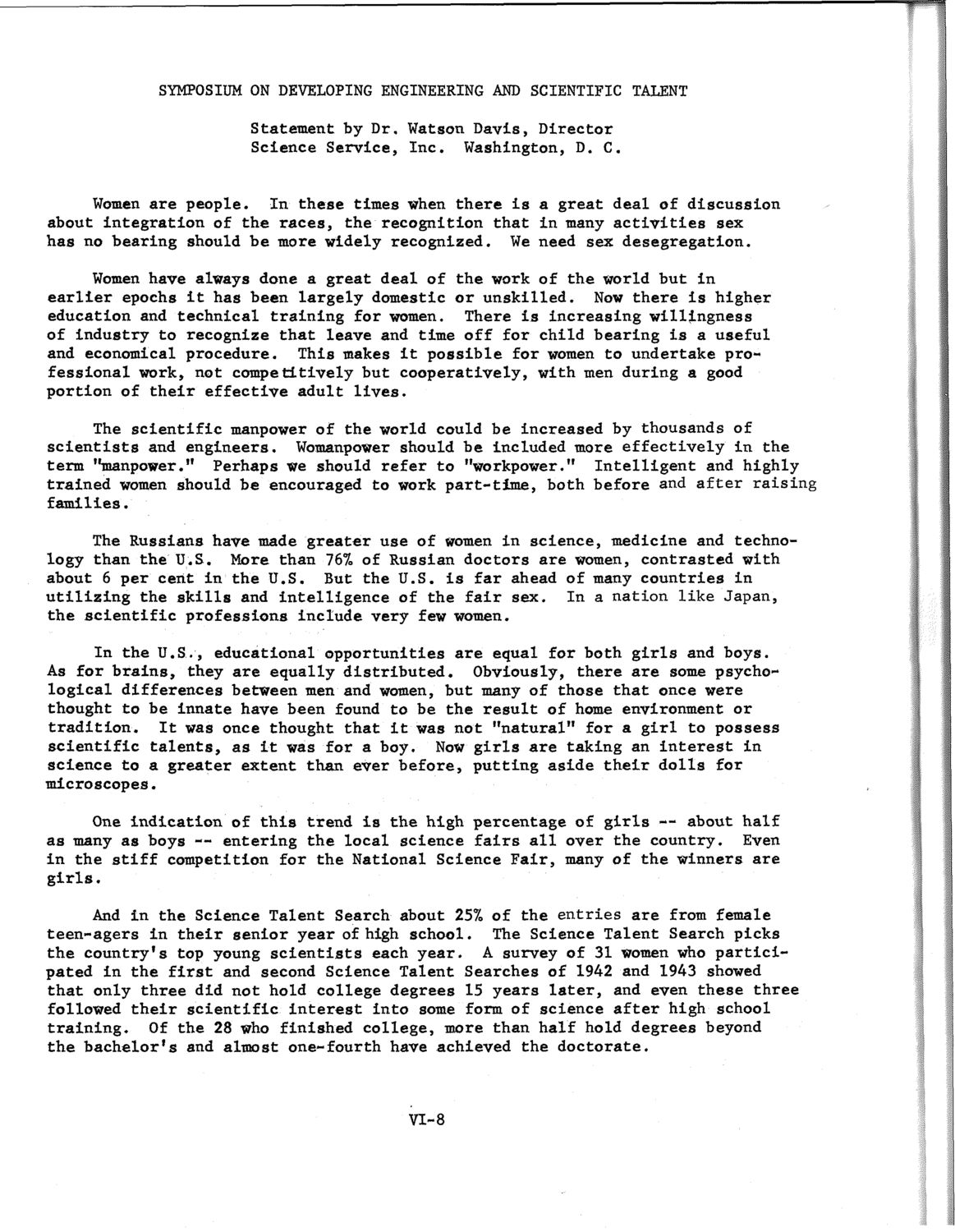| |
| |
Caption: SWE - Proceedings of the First International Conference of Women Engineers and Scientists
This is a reduced-resolution page image for fast online browsing.

EXTRACTED TEXT FROM PAGE:
SYMPOSIUM ON DEVELOPING ENGINEERING AND SCIENTIFIC TALENT Statement by Dr, Watson Davis, Director Science Service, Inc. Washington, D. C. Women are people. In these times when there is a great deal of discussion about integration of the races, the recognition that in many activities sex has no bearing should be more widely recognized. We need sex desegregation. Women have always done a great deal of the work of the world but in earlier epochs it has been largely domestic or unskilled. Now there is higher education and technical training for women. There is increasing willingness of industry to recognize that leave and time off for child bearing is a useful and economical procedure. This makes it possible for women to undertake professional work, not competitively but cooperatively, with men during a good portion of their effective adult lives. The scientific manpower of the world could be increased by thousands of scientists and engineers. Womanpower should be included more effectively in the term "manpower." Perhaps we should refer to "workpower." Intelligent and highly trained women should be encouraged to work part-time, both before and after raising families. The Russians have made greater use of women in science, medicine and technology than the U.S. More than 76% of Russian doctors are women, contrasted with about 6 per cent in the U.S. But the U.S. is far ahead of many countries in utilizing the skills and intelligence of the fair sex. In a nation like Japan, the scientific professions include very few women. In the U.S., educational opportunities are equal for both girls and boys. As for brains, they are equally distributed. Obviously, there are some psychological differences between men and women, but many of those that once were thought to be innate have been found to be the result of home environment or tradition. It was once thought that It was not "natural" for a girl to possess scientific talents, as it was for a boy. Now girls are taking an interest in science to a greater extent than ever before, putting aside their dolls for microscopes. One indication of this trend Is the high percentage of girls -- about half as many as boys — entering the local science fairs all over the country. Even in the stiff competition for the National Science Fair, many of the winners are girls. And in the Science Talent Search about 25% of the entries are from female teen-agers in their senior year of high school. The Science Talent Search picks the country's top young scientists each year. A survey of 31 women who participated in the first and second Science Talent Searches of 1942 and 1943 showed that only three did not hold college degrees 15 years later, and even these three followed their scientific interest into some form of science after high school training. Of the 28 who finished college, more than half hold degrees beyond the bachelor's and almost one-fourth have achieved the doctorate. VI-8
| |